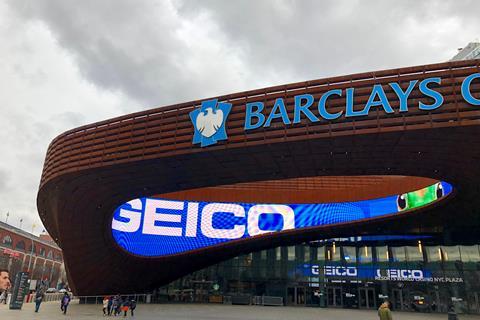Foreign money twice bailed out Pacific Park, one of New York City’s most ambitious but contentious developments. Now a major Chinese player has scaled back its stake. The move might put some juice back into the slow-moving Brooklyn scheme, but completion remains a far-off dream.

The news that Greenland USA, a subsidiary of Shanghai-based Greenland Group, is to sell three prime parcels of the 22-acre site to well-established New York developer TF Cornerstone and the Brodsky Organization came as a surprise. It partly reverses the flow of overseas investment needed to rescue the project from oblivion.
New York’s Forest City Ratner launched Pacific Park, at a congested Brooklyn location where Atlantic and Flatbush avenues diverge, more than 15 years ago. But so far, only five of 15 planned buildings have gone up, and so widely separated are they that a visitor might not realise that they’re even part of the same complex.
The site consisted of antiquated small apartment buildings, a few more modern ones and a sunken train yard. In 2003, developer Bruce Ratner proposed replacing them with a sports and entertainment arena to house the Brooklyn Nets NBA team, 14 apartment buildings and a park. His bold vision came years before high-end residential towers rose across the borough and Brooklyn- made products and styles became a “brand”.
The state and city approved the plan, estimated to cost $6bn, in 2006. But the old buildings had to come down first. One stubborn apartment owner wouldn’t budge and stymied the project until 2010, when he sold out for $3m to Ratner, who finally broke ground on the scheme that year.
The delay and Wall Street crash turned the scheme into a money pit for Ratner. In 2009, he turned to Russian industrialist and basketball aficionado Mikhail Prokhorov’s Onexim Sports and Entertainment, which bought 80% of the Nets and 45% of the Barclays Center holding company. It bought the rest a few years later.
Ratner scrambled for a new architect for Barclays Center when Frank Gehry bowed out. A flying-saucer-like redesign by SHoP Architects proved popular and the arena opened in 2012. Work started on the apartments, but the jinx continued. The world’s tallest (32-storey) modular tower was assembled at Brooklyn Navy Yard, but work ran over-budget and flaws had to be fixed before tenants could move in.

In 2013, Ratner sold 70% of what he owned at the site to Greenland USA for $200m. A year later, Ratner broke ground on one of Pacific Park’s ‘affordable’ apartment buildings. Its 298 units were a small step to meeting a state-city deadline to build 2,250 affordable apartments of a planned total of 6,430 units at the site by 2025. Only 800 affordables have been built so far.
Tensions between the partners soon surfaced. Greenland said it was eager to kickstart building. Forest City balked, citing a supposed 30,000 surplus of new Brooklyn apartments and claiming a $307.6m accounting loss on Pacific Yards.
Last winter, Ratner sold all but 5% of his stake to Greenland, which sounded eager to resume construction. Then, last week, the New York Post revealed that Greenland was selling three of its dozen building sites to Brodsky and TF Cornerstone, which plan to break ground in early 2019 and a year later, respectively.
Greenland said it would start on a 500ft-tall apartment tower next to Barclays Center – raising the prospect that four new buildings in all would soon rise – and is planning a platform to cover the rail yard, where six more buildings are planned.

What prompted Greenland to sell three parcels? The company said in January that its “clear focus is on development”. Principals of Greenland USA, TF Cornerstone and Brodsky told me last week it “wasn’t a planned transaction”. The idea merely grew out of conversations among the executives who had long, friendly relationships, they said.
Some observers speculated it had to do with growing Chinese government restrictions on transferring funds out of the country. But China was still New York’s largest real estate investor in 2017, after overtaking Canada the year before.
Most New Yorkers care less about the global winds than the prospect of new buildings – which the surprising arrival of two powerful local developers makes more likely.
Steve Cuozzo is a real estate columnist and contributor to the New York Post





























1 Readers' comment